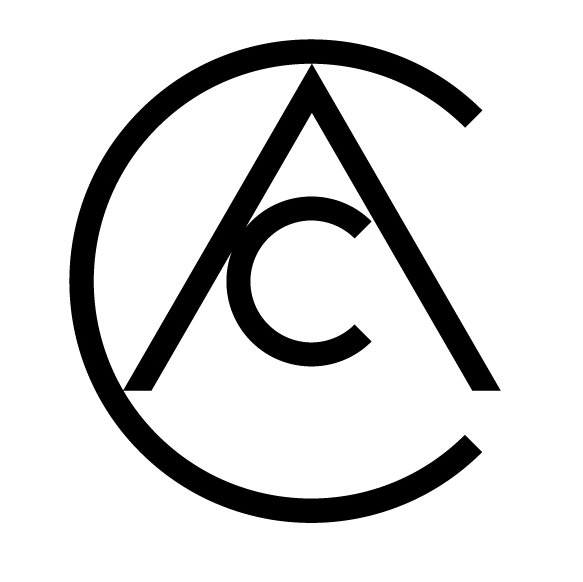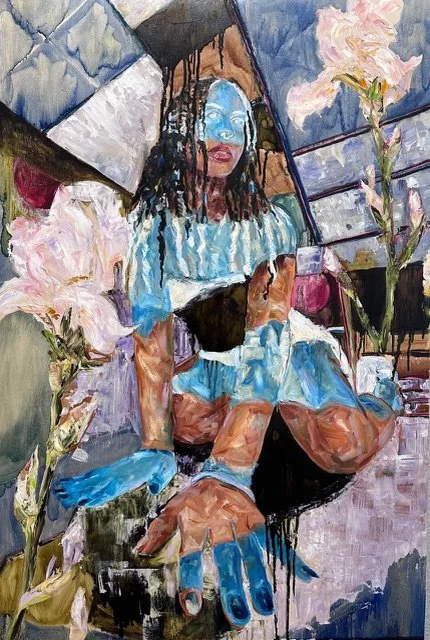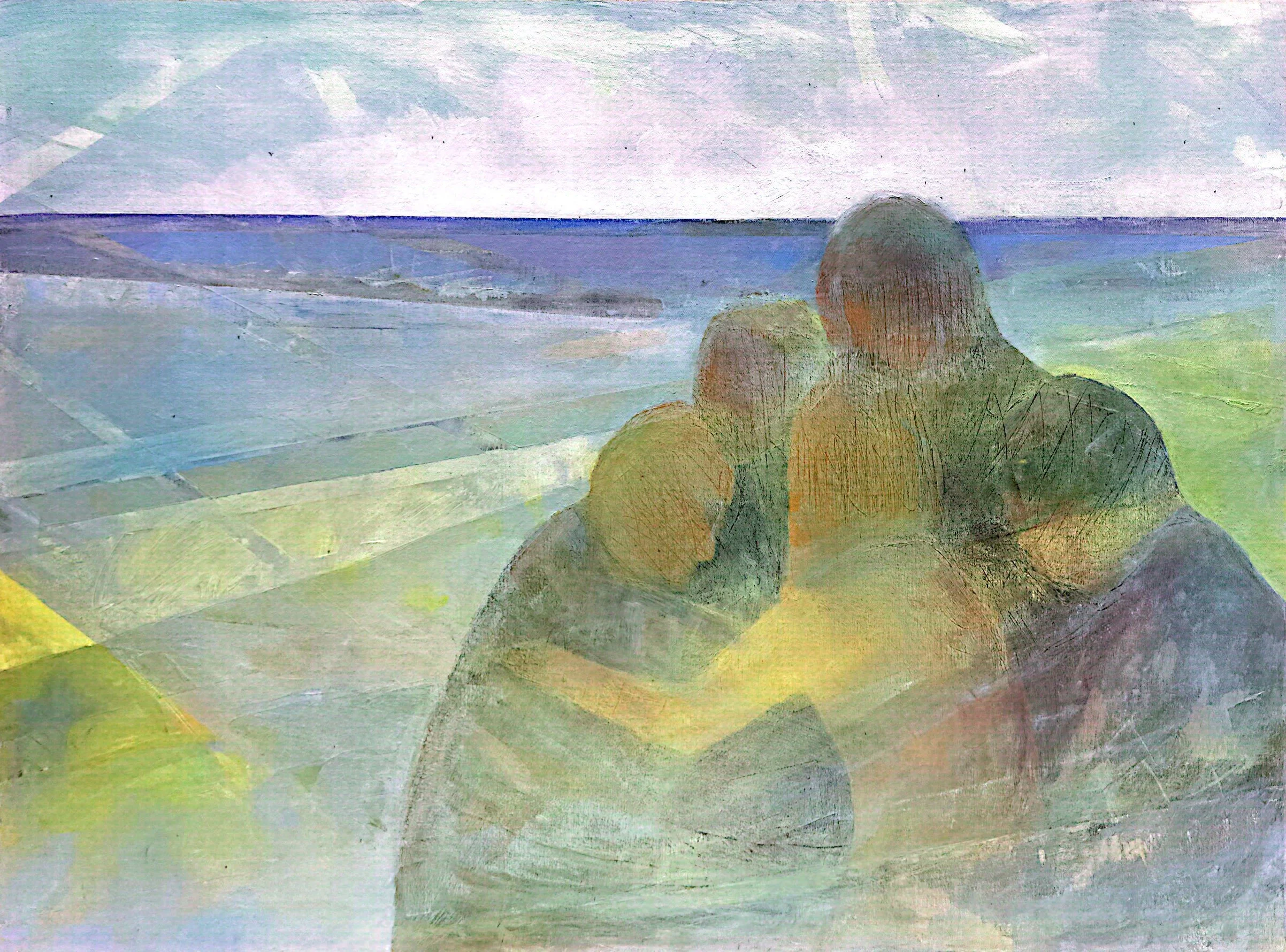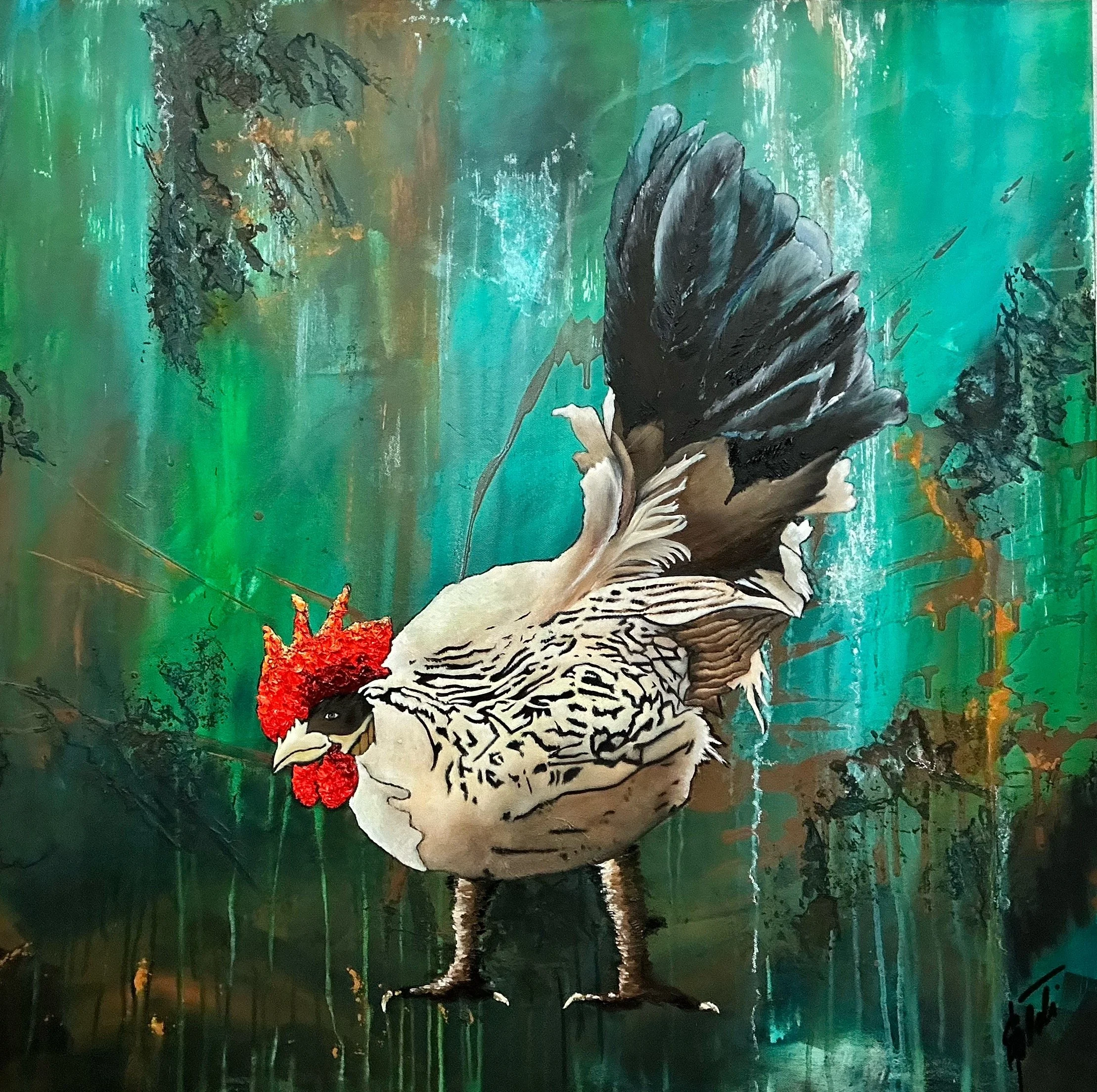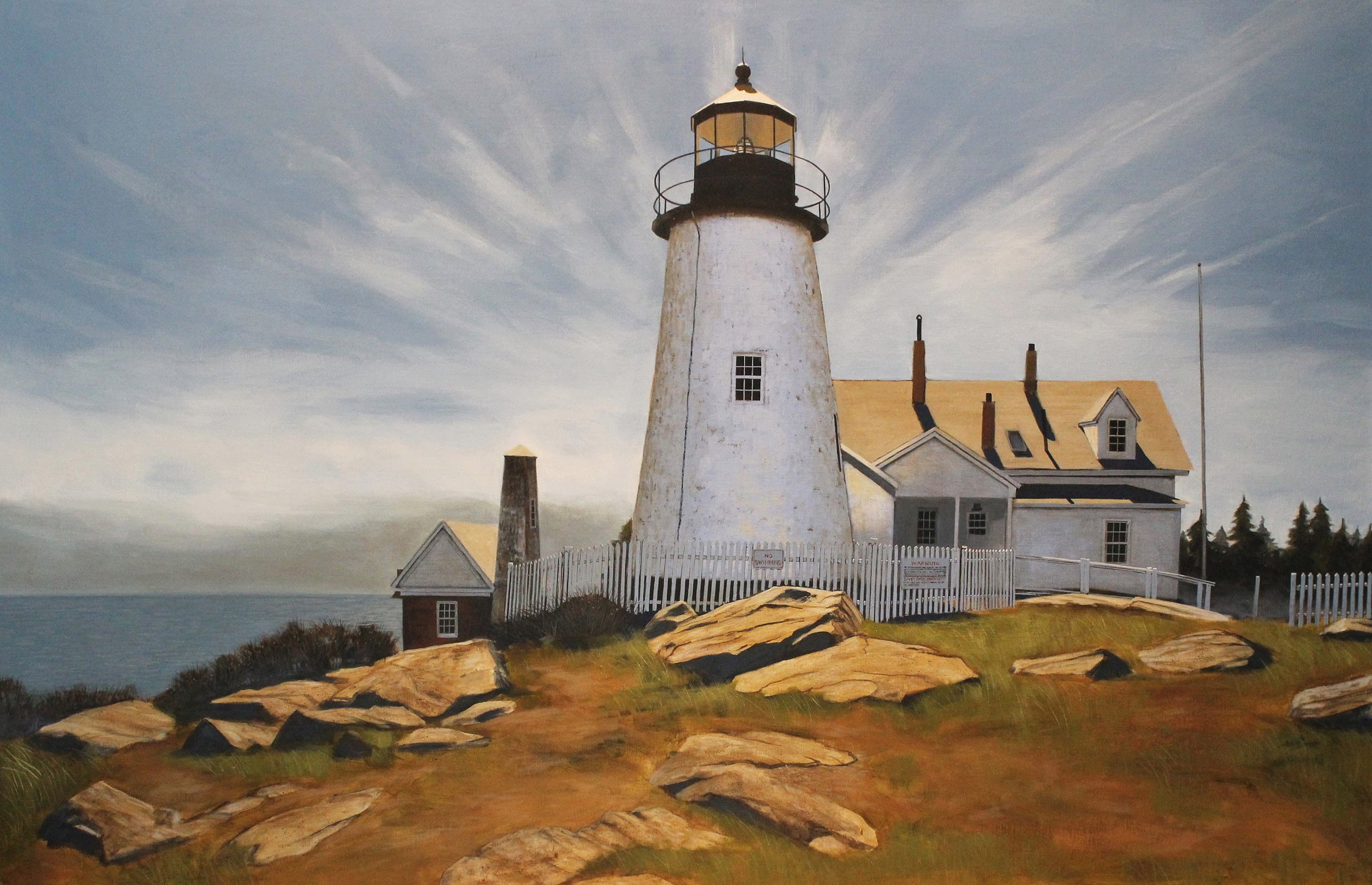Art is the most profound expression of the human spirit. I am exploring the psychological disjunction in our contemporary life caused by its fast pace and rapid changes. The youth of today have too much information, they struggle to keep their personal and/or cultural identity and try to make sense of reality. Their world has become filtered. The Iris suggests natures beauty, in it’s original form and is a symbol for hope.
All in Interview
Interview with Dita Jacobovitz
When I am out, they’re in nature, following and observing nature I learn again what is proportional, what are the authentic colours. It’s so important to me to do this, gives me objective feedback. More like a test for mixing colours and grasping the essence of the scene Infront of me.
Interview with Anastasia Yanchuk
Anastasia Yanchuk is a rising voice in contemporary art. Her mission is clear: to inspire, to empower and to remind us that true beauty is not perfection but presence. In this interview, she invites us into her creative world, where freedom is painted in layers, femininity shines with quiet courage and art becomes a mirror of the soul.
Interview with Paola Salomè
My art is instinctive, unplanned, and gathers some characteristics from each of these artistic movements, but the message I want to convey with it is the element of primary importance to me. In each canvas, I focus on a specific theme, without adding superfluous elements that could confuse the observer. So, I let myself go to creativity, trying to communicate positive messages and true emotions.
Interview with Angelė Šimoliūnienė
My paintings invite viewers into a metaphysical dialogue between light and consciousness. The expressive use of acrylic reflects the essence of life energy, oscillating between bright hues and contemplative forms, and reflects a belief in the dual forces of good and evil that shape human existence. The themes evoke a spiritual undertone.
Interview with Liao WanNing
As a visual artist, my works are not intended for personal enjoyment alone but to explore complex issues of international politics, economics, war and peace, and state and international relations through the language of art. These works are not only part of the international political landscape but also an objective reflection of the current realities of people's lives.
Interview with Oksana Salminen
Art affects us directly and strongly. I strive for art to bring people joy, comfort, and positive energy. All my work aims at this. The sea, landscapes, flowers, animals, and people are my favorite subjects and the main objects in my pictures. I love to show the best and most beautiful part of them all.
Interview with Eveline Göldi
Can you tell us when you decided to pursue a career as an artist?
I had the enthusiasm for art since I was a child, but when I started painting with acrylics in the mid-90s, I grew the desire to put my messages into pictures and make happy faces. When I was able to sell the first paintings, I wanted to refine my technique and so the next steps came naturally.
Interview with Mieshiel Murray
I sometimes refer to my artwork and my life as a whole as walking ‘Between Worlds’ I draw and paint what some people can not see in this 3D reality; the dreams, visions and imagination of realities and dimensions beyond this one. The Light Codes are universal symbols, lines and patterns that resonate positive frequencies with the viewer on a cellular level and are directly transmitted in the presence of the painting
Interview with Gino Dalle Luche
I consider my work a meeting point between emotion and reality. In certain moments, dreams and imagination come into play, helping me seek balance between my inner world and the world around me. At the same time, I believe the canvas becomes a kind of story, where the viewer is free to listen and perceive their own feelings and emotions.
Interview with Maria Bordeanu
Maria Bordeanu was born in Bucharest in 1982 and she has got a MFA degree in Painting from UNARTE Bucharest since 2007. Her artistic interests revolve around photorealistic, figurative and cinematic themes subtly infused with elements of media culture, alongside dystopian elements and post-human visual metaphors.
Interview with Kate Huang
My name is Kate Huang, I was born in 1983 Kaohsiung City, ROC. In 2011 graduates from the Taipei National University of the Arts Fine arts Creation. Specialties-Graphic Design, Painting (Acrylic, Sketch, Watercolor), Clay, Computer Graphocs. Most of my creations use brain cells as the theme of creation to illustrate the interpersonal relationship between people, and combine the abstract internalization with the external scenery to express the internal and external states.
Interview with Daniel Mckinley
I approach my work as being open to interpretation. When I am working on a painting would never think about meaning. I will always leave the meaning to the viewer. There is always a push and pull with the canvas. I only do what it tells me to do.
Interview with Robert Haworth (aka The Butterflyman)
We’re all unique. My particular uniqueness lies in the journey I’ve made – from being a damaged “caterpillar”, to undergoing an extraordinary and alarming transformation as a “chrysalis”, and eventually becoming a “butterfly” in the sunshine: finding my freedom as a person and as an artist.
Interview with Ariel Li
Ariel Li is a spatial artist and speculative narrator exploring the connections between space, memory, and identity. Graduated from Royal College of Art, her work examines how spatial narratives and human senses shape our understanding of physical spaces and objects. Focusing on old objects, she uncovers the rich histories and emotional connections they carry, exploring their transformation into new stories through interaction.
Interview with Eric Hubbes
Eric Hubbes is an artist whose work bridges the realms of science, philosophy, and aesthetics. Based in Bonn, his atelier serves as a creative hub where he works on canvas and paper, utilizing a wide range of materials and techniques—including acrylic, watercolour, marker, charcoal, texture paste, and collage. His creative journey explores universal themes such as transformation, interconnectedness, and the cyclical nature of existence. By integrating elements of quantum mechanics, chaos theory, and surrealism into his art, he creates visually compelling works that challenge conventional perceptions of reality.
Interview with Yasuka TAKAHASHI
I am pursuing a unique form of art that integrates the structural beauty of mathematical theory, digital technology, and the density of color and patterns created by threads. By merging these elements with graphic design, I aim to create elegant and refined works that only I can produce. My unwavering belief is to continue creating art that is sophisticated and dignified.
Interview with Gianfranco Merati
By pushing into the abstract in some cases or the hyper-realism in others, I aspire to creating images that challenge or, in the most extreme cases, subvert what we think we know about how what we call reality renders itself to us.
Interview with Irina Metz
I often think of my paintings as visual poetry. Just as poetry distills emotion and meaning through rhythm, structure, and metaphor, I try to evoke similar layers of resonance through color, texture, and composition. There’s an economy of language in poetry that I find parallels the expressive choices I make in painting—how a single brushstroke or shift in tone can capture a complex emotional state.
Interview with Steve Rogers
I have always loved the texture and paint strokes of oil. I love the three di-mensional feel of it and I try to achieve that with heavy impasto brush strokes. One of my approaches is to use underpainting and glazing to achieve brilliance. It can be done in oil, but it is time consuming. Acrylics dry within minutes and allow you to almost immediately glaze over the underpainting. I use almost every paint tool designed to build up layers , lay in fine lines and blend soft boundaries in skies. Acrylics allow endless layers of paint as the image is built up and I think it results in depth and complexity
